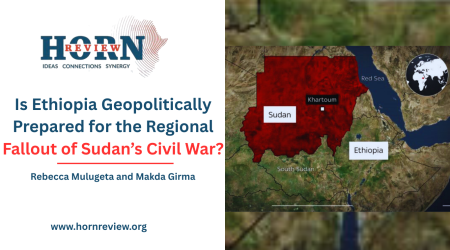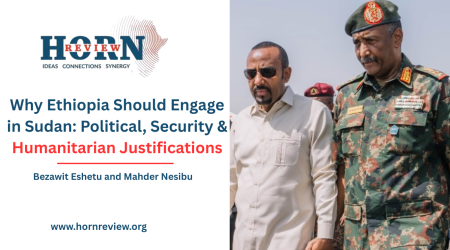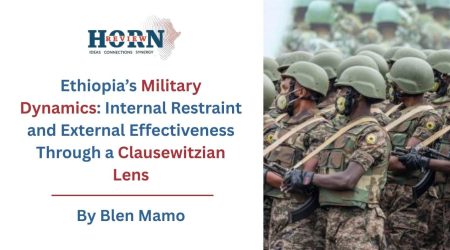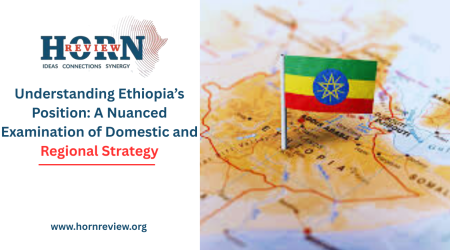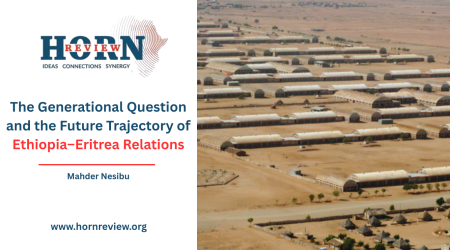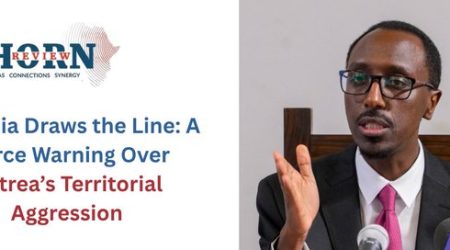
30
Jul
Ethiopia’s Predicament in Hosting Refugee: From Humanitarian Stress to Strategic Leverage
Ethiopia’s commitment to taking in refugees reflects national character. In a region known for instability, Ethiopia has maintained one of the most progressive asylum policies in Africa, providing refuges protection, work, education, and the chance to participate in community life. For those who have lost everything, this means more than safety, it is an opportunity to start over and rebuild their dignity through participation rather than resilience. However, this generosity now faces increasing pressure.
Ethiopia is currently hosting more than 1.2 million refugees making it the second-largest host country in Africa. Simultaneously, it is dealing with more than 3.5 million internally displaced citizens due to conflict and climate-related issues. This burden is particularly evident in border towns and vulnerable rural areas, where already impoverished communities must share limited resources, such as, schools, clinics, and clean water with those who are even more in need than they are.
The Geopolitical Threat Matrix: The Point at Which Hospitality Turns into a Risk
The Horn of Africa is experiencing a turbulent transition marked by transitional militant flows, proxy wars, and collapsing states. Ethiopia’s refugee paths are now more susceptible to manipulation and infiltration by hostile groups. Political unity and internal security may be at risk if these corridors are not controlled. The ongoing conflict between the Rapid Support Force (RSF) and the Sudanese Armed Forces (SAF) has made the western border, particularly the area around Metema and Kurmuk, a volatile hotspot. Due to the conflict between the Sudanese Armed Forces (SAF) and the Rapid Support Forces (RSF), the western border, especially around Metema and Kurmuk has turned into a flashpoint.
The movement of TPLF elements across this corridor was facilitated by RSF and other Sudanese actors, according to intelligence reports during the Tigray conflict. That precedent still stands today. The likelihood of armed fighters, foreign mercenaries, and political agents entering Ethiopia veiled as civilians is high. Amhara and Benishangul-Gumuz areas, already strained by regional grievances and ethnopolitical rivalry, the influx of unvetted individual poses risk of escalation, destabilization and the proliferation of weapons.
The southeastern route with Somalia presents a distinct but equally serious threat. Al-Shabaab’s capacity to utilize cross-border displacement as a pretext for logistical activities and recruitment efforts was exposed by the ENDF’s successful 2022 invasion of Ethiopia’s Somali region. (Garowe online, 2022). It is often difficult to differentiate among refugees, militants and smugglers due to overlapping clan networks across the Ethiopian-Somalia border. The risk of radicalization is equally significant, disenchanted, marginalized groups, especially youth may be drawn to extremist narrative, endangering not only Ethiopia’s border area but also regional stability at risk.
The border between Eritrea and Ethiopia, especially in Tigray region is a complicated area. Unfortunately, this complexity adds to a troubling situation. Eritrean youths and occasionally even children, often flee to Ethiopia to avoid the country’s mandatory, never-ending military conscription program. This system has faced international criticism and is seen by some as a form of forced labor. The majority of Eritrean refugees are sincerely seeking asylum from these harsh conditions, while some Eritrean refugees may have issues with the government in Asmara or support political movements led by the diaspora. Ethiopian political tensions might unintentionally exacerbate as a result of these refugees. The region’s effort to promote peace may be vulnerable by this situation, which has the potential to revive old conflicts and narratives. The need for the refugees and the potential consequences of Ethiopian stability must be carefully considered in this delicate balancing act.
Legal and Strategic Foundation: From obligation to leverage
Ethiopia is a signatory to both the 1951 UN Refugee Convention and the OAU Convention Governing the specific aspects of Refugee problem in Africa. Its Refugee Proclamation (2019) allows for rights-based integration and self-reliance strategies that match the global compact on Refugees (UN, 2018). But these legal requirements don’t preclude strategic calibration.
International law encourages the sovereign right to control security in arrangements for hosting refugees. Even though the country has received over 400 million dollars in international aid for refugees in the past two years, a large portion of this aid is a short-term, fragmented, and designated for specific purposes (World Bank and UNHCR, 2014). Often, host communities do not benefit much, which exacerbate tensions and undermines resilience. Furthermore, donor goals whether aimed at discouraging migration to Europe or exerting political pressure, can create conditions that clash with Ethiopia’s long-term strategic aims.
Ethiopia should lead the way in daring diplomatic move to break free from this cycle of dependency: a “Non-Debt Conditionality” doctrine. This strategy views refugee hosting as a geopolitical contribution worthy of returns that do not involve debt, such as:
- Preferential market access: Duty free, quota-free entry for Ethiopian goods into EU, the middle eastern and US markets in exchange for regional stabilization, in contrast to traditional aid or concessional loans.
- Strategic investment without debt: Joint funding of infrastructure projects (roads, clinics, schools) in hosting areas to ease tensions locally and guarantee long-term sustainability.
- Technology and training transfers: implementation of biometric system drone surveillance, and vocational upskilling that improve the reliance of citizens and refugees.
Although it has flaws due to donor fatigue and inadequate refugee integration, the 2016 EU-Jordan Compact, which offered trade concession in exchange for refugee employment reforms, serves as a precedent. Ethiopia must go further: any future accord must be formally enshrined in Ethiopian constitutional law, maintain fiscal sovereignty, remain regionally specific. A major flaw in traditional refugee policies is sidelining of refugee voices and agency.
The error must not be repeated in Ethiopia’s recalculated framework. Refugees are not just passive recipients of help; they are skilled and self-sufficient individuals. Strategic integration requires creating formal platforms for consultative platforms like Refugee Councils, and appointing community liaisons.
A Blueprint for Action: Phased Strategic Execution
Restoring sovereign control over national borders is the first and most important task. This starts with improving vetting procedures in high-risk areas. Critical border crossings require the deployment of integrated security teams that includes the ENDG, Federal Police, and National Intelligence and Security Service (NISS). Importantly, community-based intelligence must be combined with technology such as biometric registration, which can connect to Ethiopia’s new National ID Program (Fayda). Technology cannot provide the necessary human context unless local elders, administrators, and host population helps distinguish between legitimate refugees and potential infiltrators. Integrating traditional knowledge with contemporary system is essential.
The attention must shift to economic statecraft as security measures progress. The administration should encourage the establishment of refugee and host community economic zones near the existing industrial corridors like Bole Lemi II, Dire Dawa or Kombolcha. These zones can get funding from international partners under the “non-debt conditionality” framework without incurring debt, and they should try drawing in investments in digital services, light manufacturing, and agribusiness. A key component would be mandatory employment quotas for both refugees and members of host community, directly addressing local concerns about economic competition and guarantee that the benefits of investment are distributed. As result, refugees are no longer perceived as liabilities but rather as catalyst for local economic growth.
In order to establish clear guidelines for labor rights, settlement and integration, Ethiopia must harmonize the legal frameworks that govern refugee affairs between federal and regional authorities. On this diplomatic front, Ethiopia needs to assume a leadership role in region and must go beyond IGAD’s rhetorical appeals. It ought to propose a Horn of Africa Refugee compact. A formal agreement focusing on four key areas.
- equitable burden-sharing procedures
- coordinated, intelligence-driven border management
- A standardized biometric registration system among the member states and
- A cooperative early warning system for mass displacement events.
By shaping these new regulations, Ethiopia can transform from a constant crisis responder to the essential normative fulcrum of the region. Ethiopia is at a critical point in its history regarding its refugee policy. It is no longer possible to do nothing when institutions are under pressure, internal unity shaky, and external threats rising. By redefining refugee hosting as a tool of strategic diplomacy and security resilience, Ethiopia can turn vulnerability into geopolitical strength Achieving the transformation requires strong leadership, a regional vision, and a refusal to let humanitarian generosity be used as a weapon against national interest.
It also calls for a strategic shift away from crisis management that depends on donors and toward assertiveness in policy led by sovereigns. This moment marks a new chapter in Ethiopian statecraft: a time when borders are secure, refugees are valued and Ethiopian leads not only through tenacity but also through principled and practical power.
By Surafel Tesfaye and Bezawit Eshetu, Researcher, Horn Review
References
- Amnesty International. (2024), Eritrea: forced conscription and the crisis of asylum
- Garowe online. (2022). Ethiopian forces thwart Al-Shabaab infiltration in Somalia region.
- UNHCR. (2025). Ethiopia: Refugee Statistics and Operational Update. United Nations High Commissioner for Refugees.
- UNHCR and World Bank. (2014). Forced Displacement and mixed migration in the Horn of Africa.
- Federal Democratic Republic of Ethiopia. (2019). Refugees proclamation No. 1110/2019. Federal Negarit Gazette, Addis Ababa.
- European commission. (2016). The EU-Jordan Compact: A New Holistic Approach. Brussels: European Commission.

